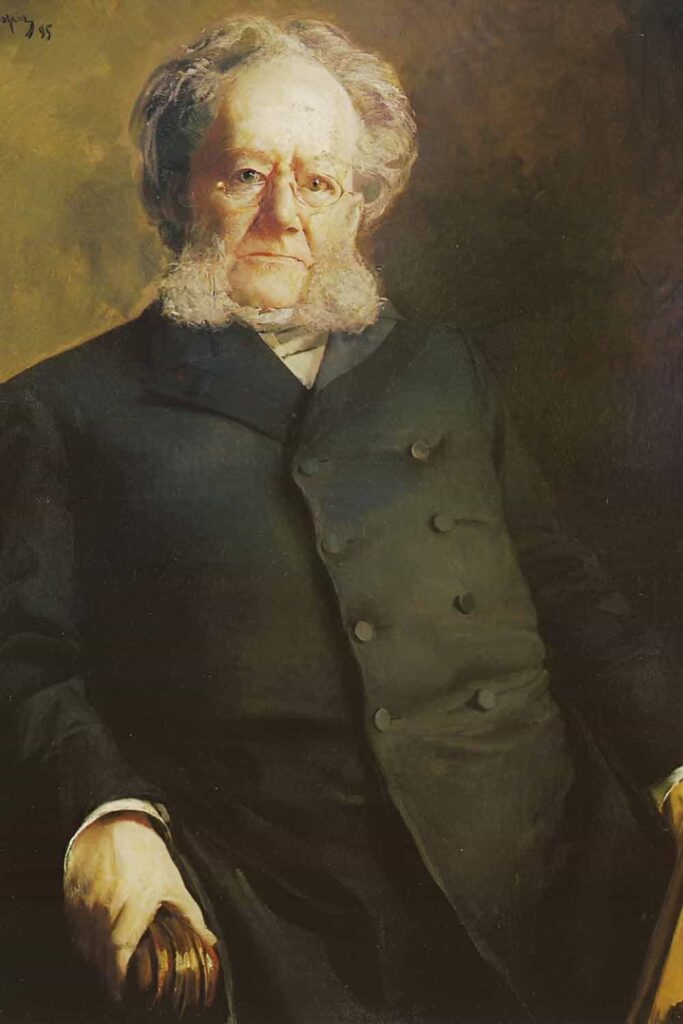
Henrik Ibsen | Norwegian Playwright | Father of Modern Drama
Henrik Ibsen’s Plays on PageVio
Catiline – 1850
The Burial Mound – 1850
Lady Inger of Oestraat – 1854
The Feast at Solhaug – 1854
Olaf Liljekrans – 1856
The Vikings at Helgeland – 1858
Love’s Comedy – 1862
The Pretenders – 1863
Brand – 1865
Peer Gynt – 1867
Emperor and Galilean – 1873
The Pillars of Society – 1877
A Doll’s House – 1879
Ghosts – 1881
An Enemy of the People – 1882
The Wild Duck – 1884
Rosmersholm – 1886
The Lady from the Sea – 1888
Hedda Gabler – 1890
The Master Builder – 1892
Little Eyolf – 1894
John Gabriel Borkman – 1896
When We Dead Awaken – 1899
Henrik Ibsen Biography
One of the most influential playwrights and dramatists of all time, Henrik Johan Ibsen, was born in Skien, Norway, in 1828. Ibsen is one of the founding fathers of modern literature and is often referred to as “the father of realism” for his influence on the theater. He is widely credited with transforming modern theater and introducing realism into the theater.
Early Life
Ibsen was born in Skien, a small city in the county of Telemark in southeast Norway. He was the second of six children of Knud Ibsen, a merchant, and Marichen Altenburg. His father and family’s fortunes turned for the worse when Ibsen was seven years old. This period of deprivation and hardship inspired the themes of his many plays, which often focus on society’s social and economic aspects.
First Play
At 15, Ibsen took up a position as an apprentice pharmacist in Grimstad and later attended a university in Christiania (now Oslo). During this time, the young Ibsen began writing plays and poetry, although he did not gain much attention for his works at that time. His first play Catilina was published in 1849 but was not performed.
Years in Italy and Germany
Ibsen left Norway in 1862 and moved to Italy and later Germany for 27 years. In Italy, Ibsen wrote two of his most famous drama, Brand and Peer Gynt, which he wrote for a theater group in Rome. During his time in Italy, Ibsen’s other works include The Pretenders and Love’s Comedy.
In 1868, Ibsen moved to Germany, where he wrote several of his most famous plays, including A Doll’s House, The Wild Duck, and An Enemy of the People. His best-known play, A Doll House, was first performed in 1879. This play is one of the cornerstones of modern theater and has been performed countless times in the last 140 years.
The play tells the story of Nora, a wife, and mother, who is trapped in a loveless marriage. Nora has sacrificed her desires to stay in a seemingly happy home, but her husband’s ignorance and lack of understanding of her plight drive her to despair. Nora is forced to choose between her own needs and those of her husband and eventually decides to leave him, thus setting off a chain of events that leads to her ultimate liberation. This play exemplifies Ibsen’s ability to craft socially relevant and emotionally charged stories.
Return to Norway and Later Work
Ibsen returned to Norway in 1891. He befriended the Norwegian pianist and music teacher Hildur Andersen, who may have inspired the character of Hilde Wangel in The Master Builder (1892). His last play, When We Dead Awaken, was published in 1899.
Passing of A Playwright
On May 23, 1906, Norwegian playwright Henrik Ibsen died at 78. Ibsen is remembered as one of the most influential and respected figures in modern drama history. His innovative works are renowned for their social commentary and psychological depth.
Today, Ibsen’s legacy is celebrated and honored in Norway. In Bergen, there is a statue of him on the waterfront. In Skien, the Henrik Ibsen Museum displays several of his manuscripts, artifacts, and photographs.

